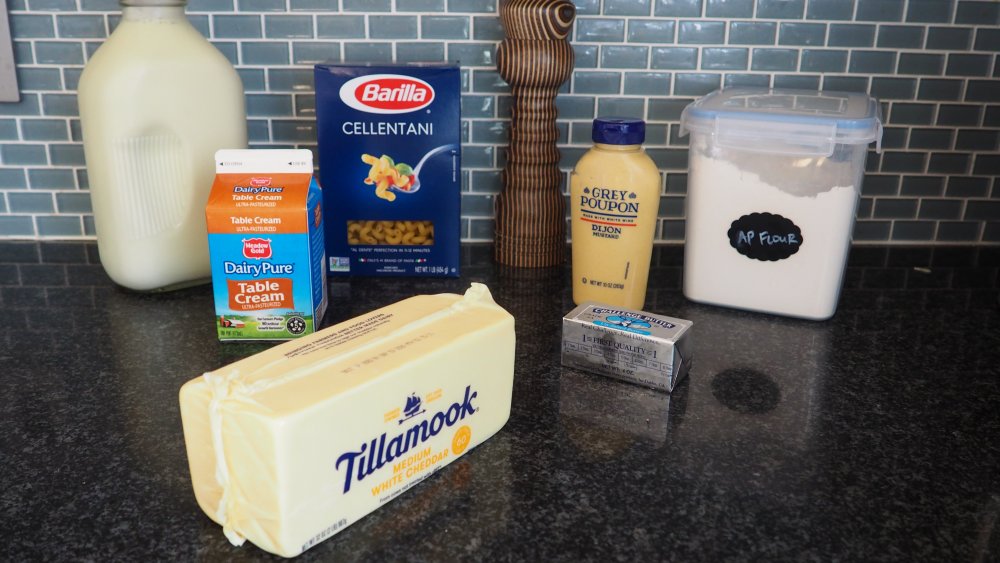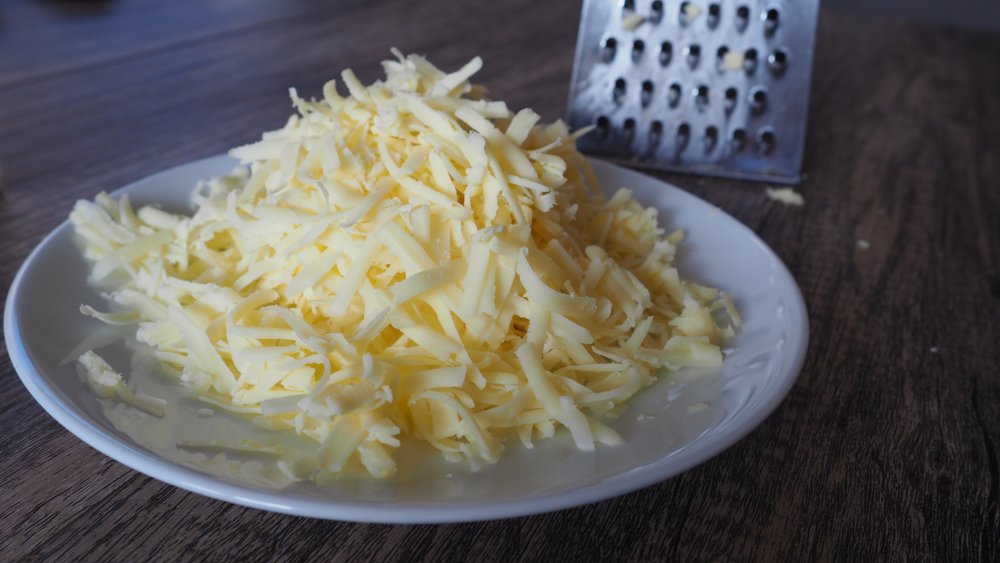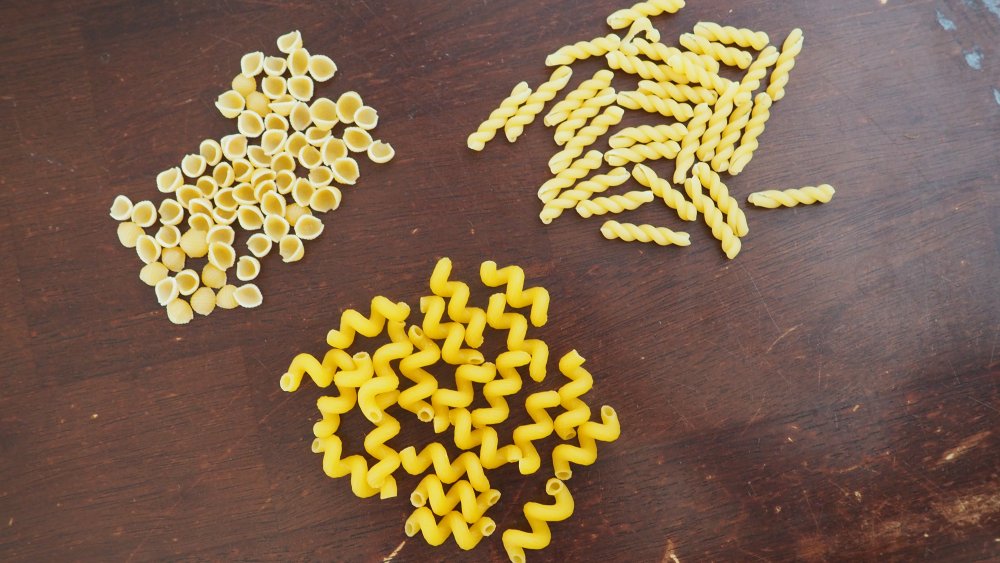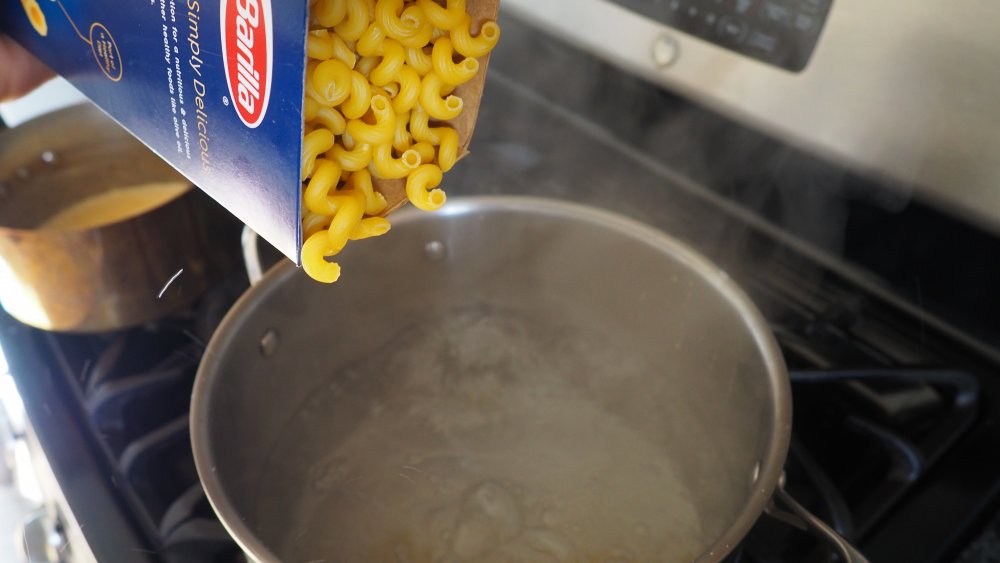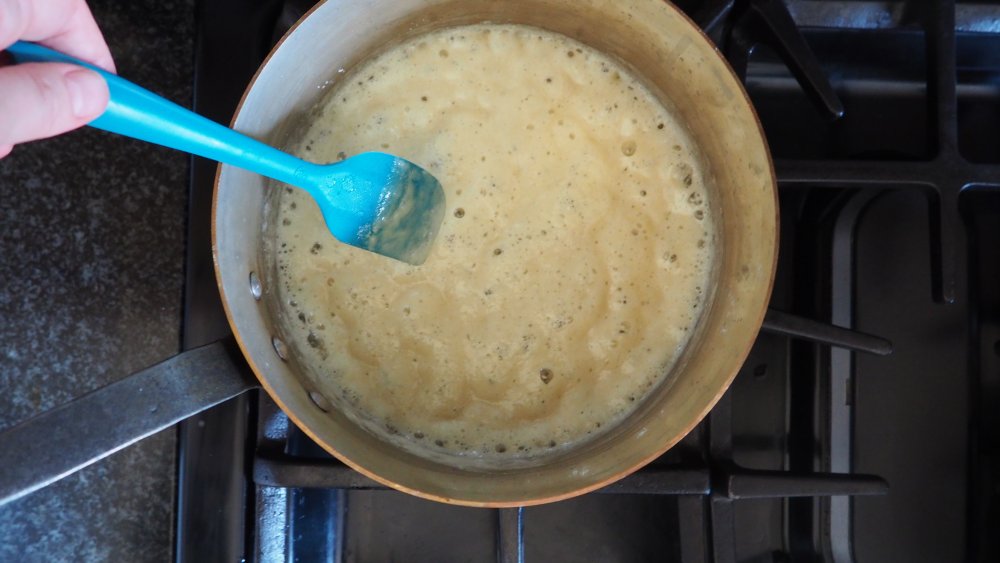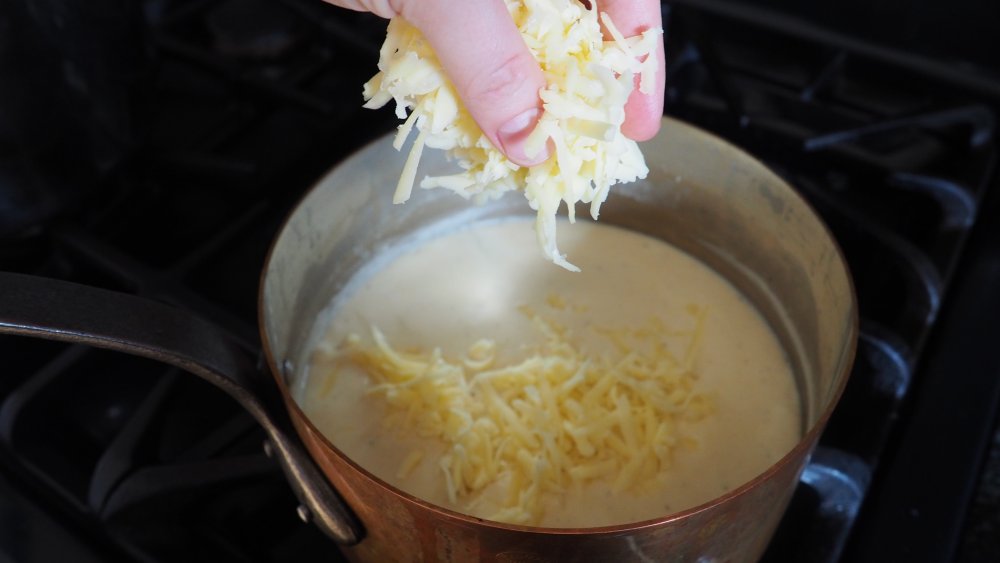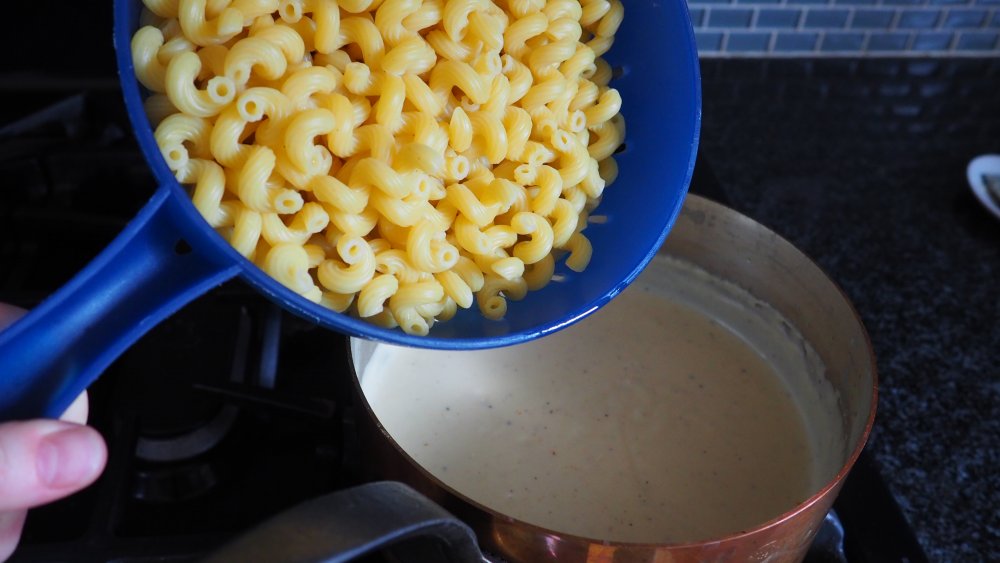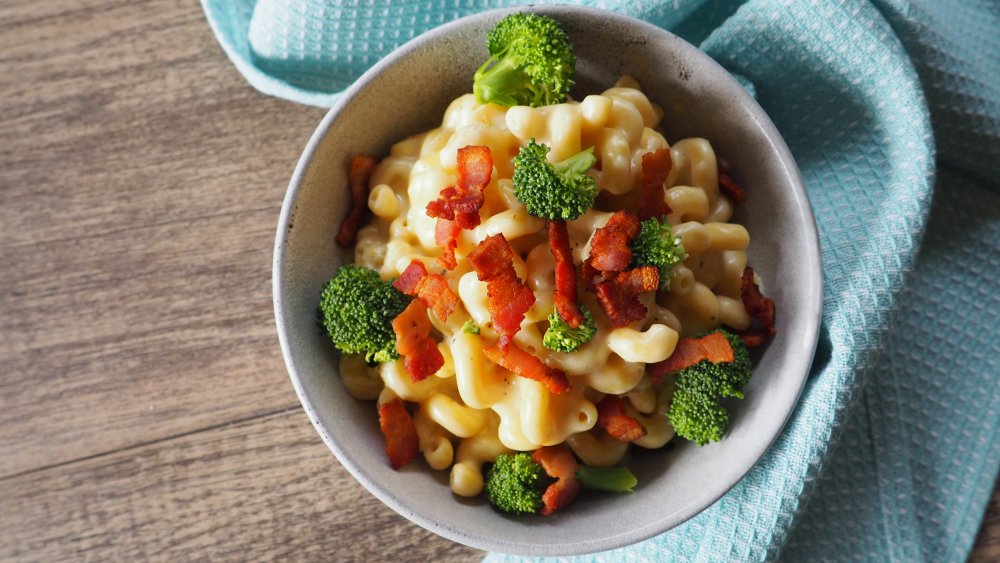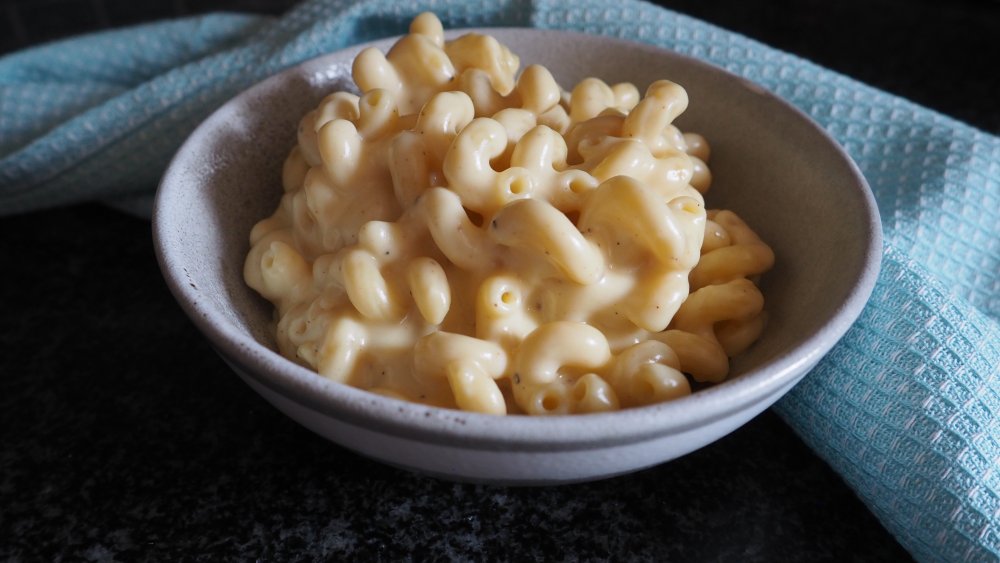Copycat Panera Mac And Cheese Recipe
Macaroni and cheese is comfort food defined. It's creamy, and cheesy, and every bite makes us a little bit happier than we were before we got started.
For a long time, Panera Bread's Mac and Cheese has been our favorite version, and we thought it would be impossible to replicate it at home. It doesn't get better than tender pasta swimming in an abundance of Panera's rich, slightly tangy sauce. Put it all together, and it creates some of the creamiest mac and cheese you'll find. It's hard to maintain self-control and just order a small; we'd order a large and take home leftovers, but we're pretty sure we'd eat the whole thing in one sitting!
The thing about it, though, is Panera's mac and cheese isn't as fresh as you think. They do use clean ingredients, and their food is free of artificial colors, preservatives, sweeteners, and other flavors from artificial sources. It does arrive premade and frozen at each store, though.
It's not really that surprising, especially when you consider that Today reports that Panera serves over 3 million servings of mac and cheese each month. But, we wanted to see if a fresh, scratch-made Panera mac and cheese copycat recipe could compete with the real deal. How did it stack up? Spoiler alert: We loved it. As a bonus, our recipe only took 30 minutes from start to finish, so you might want to read on and check it out.
Gather the ingredients for Panera mac and cheese copycat recipe
When we looked at Panera's official list of ingredients, we tried not to be intimidated. There are a ton of ingredients on this list, but most of them are preservatives that we don't have to use at home. Once you look past those ingredients, the list is actually pretty straightforward.
The cheese sauce starts out with a flour and butter roux, which thickens the milk and cream. The sauce also contains cheddar cheese. The Panera ingredients list isn't clear on what type of cheddar, but we knew it had to be white cheddar from the product description and the finished dish's color.
We knew there wasn't any onion and garlic in the dish because the U.S. Food and Drug Administration (FDA) requires food manufacturers to list those specific ingredients. They don't require anyone to list "spices" that are used for seasoning, so we had to do some guesswork there.
After tasting a bowl, we were pretty sure the tangy flavor in Panera's Mac and Cheese came from mustard, so we added in a teaspoon of Dijon mustard to the mix. Spicy brown mustard would add too much heat, and mustard powder would be too mild, but Dijon seemed to do the trick nicely.
You'll find a full list of the ingredients, including the step-by-step cooking instructions, at the end of this article.
High-quality white cheddar is a must for copycat Panera mac and cheese
The ingredients for Panera's mac and cheese are pretty straightforward, but you do need to splurge on high-quality cheddar cheese. Cabot Vermont white cheddar is a great choice if you can find it, as Panera's website states they use Vermont cheddar. We couldn't find any Vermont cheddar at our grocery store, so we went for Tillamook Oregon cheddar instead. It will taste great no matter which coast you choose, but do make sure to buy the best quality available at your store.
We would also caution you against choosing packaged shredded cheese, and not only for this recipe. Shredded cheese is one of those foods that has ingredients you'd rather not know about. Manufacturers use cellulose (which is just a fancy word for wood pulp) to keep the cheese from clumping in the bag. It's unnecessary filler, and your mac and cheese will be significantly creamier if you shred the cheese yourself.
Don't stress it if you can't find the right type of pasta for this Panera mac and cheese copycat recipe
Panera uses a uniquely shaped noodle called pipette rigate in their mac and cheese. This pipe-shaped pasta is short and squat, and it has ridges on the outside of each piece that helps it grab onto thick sauces like cheese sauce. The bad news is that, try as we might, we couldn't find this noodle at our local grocery store (even though Barilla makes it). The good news? It tasted great even though we used a shape called Cellentani.
That means you can have some fun and use your favorite noodle. Look for pasta that has ridges on the outside, which create little grooves that cling onto the sauce. It's also a good idea to use a hollow noodle or a shell shape to maximize the amount of sauce you get in every bite.
Feel free to use your favorite shells, cavatappi, or regular macaroni. You could even swap-in a gluten-free noodle if you like, but keep in mind that the sauce is made with flour. Don't worry; we'll offer a suggestion for modifying the cheese sauce to make this recipe fully gluten-free.
Cook the pasta for the Panera mac and cheese copycat recipe
This is the easiest part of making the Panera mac and cheese copycat recipe, but it does require some planning ahead.
It always seems like it takes forever for the water to boil, especially when we're hungry, so we usually cover the pot with a lid to trap the steam inside. According to Cook's Illustrated, a covered pot doesn't boil that much faster than an uncovered pot, and it only saves you about a minute. But, we'll take that extra time, especially considering that covering the pot means we can't watch the water as it heats up. That always makes the process feel faster!
Once the water is boiling, add a generous pinch of salt. Salted water will season the pasta, adding an extra bit of salinity to the final dish, so don't skip this step. From there, drop in the pasta and boil it for the amount of time stated on the box. For most pasta, that's 8 to 10 minutes. Don't blindly trust the timer, though; when the time expires, taste a noodle to make sure it's cooked enough for your liking. It will cook again briefly when it's tossed in with the cheese sauce, so it can be slightly underdone, but you don't want it to taste chalky.
When you're happy with the level of doneness, drain the pasta using a colander, shaking off any excess water that might water down the sauce. Set it aside while you finish up the cheese sauce.
Meanwhile, make the roux for this Panera mac and cheese copycat recipe
While the pasta is cooking, it's time to start the sauce. The basis of Panera's mac and cheese is roux, a mixture of butter and flour that makes the sauce thick and creamy. Unfortunately, you can't just skip the flour if you want to make this sauce gluten-free; the cheese will separate from the milk without a starch to hold it in suspension, creating an oily, unpleasant texture.
Luckily, you can still make this dish gluten-free by skipping this step and starting with the next step, where you heat up the milk and cream. When the milk is warm and the cheese is melted, mix together three tablespoons of cornstarch with three tablespoons of water. Add the slurry to the cheese sauce and simmer it for a few minutes, until the mixture is nice and thick.
If you're not worried about making this recipe gluten-free, go ahead and start your roux. In a large saucepan, melt the butter over medium heat until it's lightly bubbling. Add the flour, whisking constantly to prevent any raw bits of flour from clumping together. Cook the mixture for three to four minutes, stirring the whole time, until the raw taste of flour is fully removed. You'll also know when it's done when the mixture is bubbly and starts to smell rich and nutty.
Create the cheese sauce for your Panera Mac and Cheese copycat recipe
When the roux is finished, it's time to pull the sauce together. Start by slowly adding the milk and heavy cream to the pan. You'll notice the roux will start to seize up as soon as you add the cold liquid, but don't worry; as you whisk, the thick clumps of roux will relax, mixing in perfectly with the milk. When all the milk is added, stir in the Dijon mustard and bring the mixture to a light simmer over medium heat. Continue to cook it until the liquid is nice and thick, which should take about 10 minutes.
From here, it's very important to take the sauce off the heat before adding the cheese. If you dumped the cheese into the mixture on the stovetop, the heat could cause the cheese to break, separating out the oil from the cheese and turning your sauce into a clumpy, oily mess. No one wants that! Instead, add the cheese very slowly off the heat, adding only one handful at a time. As soon as the first handful is fully melted, add the next, stirring constantly as you go. When all the cheese is incorporated, stir in the salt and pepper seasonings.
Add the pasta to finish this Panera Mac and Cheese copycat recipe
Now, it's time to bring it all together. If you were making this dish in advance, you could cool down the cheese sauce in the refrigerator and reheat it when you're ready to serve. If you're ready for dinner now, you can pull the dish together in a few minutes. Add the cooked pasta to the cheese sauce and stir until each noodle is well coated. Sometimes, the pasta cools down too much while we're making the cheese sauce, but that's okay. Simply simmer the mixture over a gentle, medium-low heat until everything is warmed through. If the sauce is too thick, you can add a splash of milk or heavy cream to thin it out. Alternatively, if the sauce looks way too thin, simmer the pasta in the sauce for a few extra minutes to let the starch from the noodles thicken things up.
This recipe serves six as a side dish, or about four as a main meal, so you may end up with leftovers. This Panera Mac and Cheese copycat recipe reheats really well, so don't throw away the extras. Place them in a storage container and let them cool, uncovered, in the refrigerator. Then, cover the container with a lid, and it will be safe to eat for three to five days. When you're ready to reheat it, add 1/2 cup of milk to the leftover pasta to help loosen up the sauce.
Turning Panera's mac and cheese copycat recipe into a main dish
This Panera mac and cheese copycat recipe makes a great side dish for barbecue ribs, pulled pork sandwiches, or even for the holidays like Thanksgiving or Christmas. That said, you can easily dress it up to make it the main meal.
Add bulk to your mac and cheese to create a more filling dish by adding a protein, like chopped bacon, buffalo sauce spiced chicken, or leftover smoked brisket. You can also add any number of vegetables to mac and cheese; our favorite is broccoli, but sauteed kale, roasted Brussels sprouts, or a frozen bag of mixed vegetables work well, too.
If you prefer a simple, plain mac and cheese, keep it as-is and design the rest of the meal around it. You can create any number of side dishes to accompany Panera mac and cheese. Try serving it with a side of oven-roasted vegetables, or make a fancy side salad that's full of toasted nuts, cheese, and a savory dressing.
This mac and cheese is hearty enough to pair with a tangy slaw, too, so feel free to think outside the box when you're creating side dishes.
How close did we get to the real Panera Mac and Cheese?
The thing we love most about Panera's mac and cheese is its creamy consistency and its cheesy flavor, and our version nailed both of those things.
The Dijon mustard was essential to creating that tangy flavor profile that keeps the cheese sauce from being overly rich (although, it is still extremely decadent). Our version definitely had the right level of cheese sauce to pasta ratio, too. The sauce didn't just cling to the noodle, but it also pooled around the pasta in the bowl, delivering a spoonful of the rich, creamy goodness with every bite.
The one part where Panera got us was the noodle shape. Since we weren't able to find the right shape in the grocery store, ours doesn't look as authentic as the real deal. Luckily, our choice in pasta didn't affect the overall flavor in the slightest. It still ate like a delicious bowl of Panera mac and cheese, and now we know we don't have to run across town when we're getting comfort food cravings.
The leftovers tasted just as good — if not better — than the first-day pasta, so we might make a double batch next time.
Panera mac and cheese copycat recipe directions
We wanted to see if a fresh, scratch-made Panera mac and cheese copycat recipe could compete with the real deal. How did it stack up? Spoiler alert: Amazing.
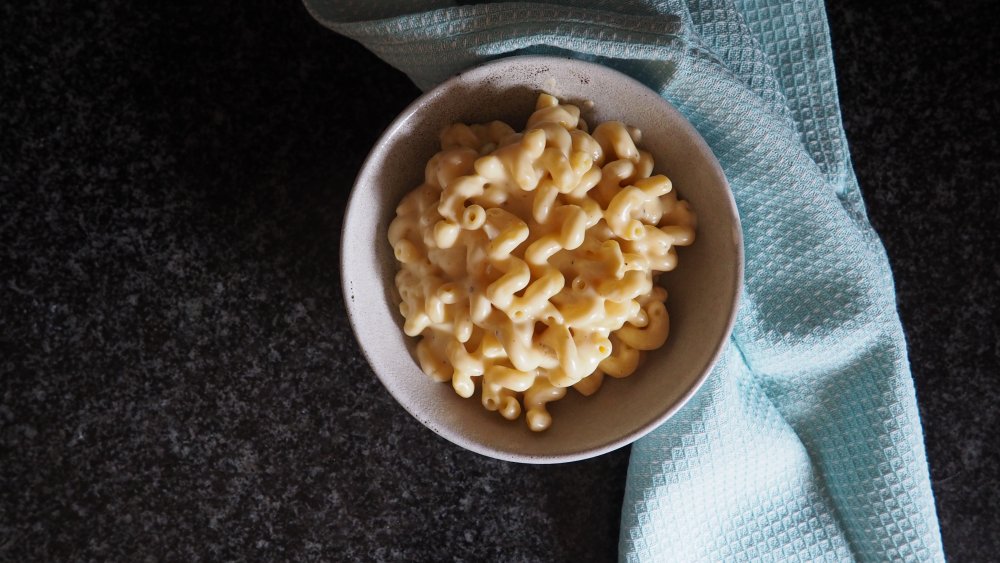
Ingredients
- 1 pound pasta shells or a similar shape with ridged edges
- 1/4 cup butter
- 1/4 cup all-purpose flour
- 2 cups whole milk
- 1 cup heavy cream
- 2-1/2 cups shredded white cheddar cheese
- 1 teaspoon Dijon mustard
- 3/4 teaspoon kosher salt
- 1/2 teaspoon black pepper
Directions
- In a large stockpot, cook the pasta in salted water according to the package directions. Drain well and set aside.
- Meanwhile, in a large pot, melt the butter over medium heat until it's bubbly and melted, about 2 minutes.
- Add the flour and cook, stirring constantly, until the roux is frothy and smells nutty, about 3 to 5 minutes.
- Slowly whisk in the milk and heavy cream. Add the Dijon mustard and bring the mixture to a simmer over medium heat. Cook for 10 minutes, until the liquid has thickened.
- Remove the pot from the heat and add the white cheddar cheese one handful at a time, stirring until it's melted before adding the next handful of cheese. When all the cheese is added and incorporated, stir in the salt and pepper.
- Add the cooked pasta to the cheese sauce and stir to combine. If the pasta cooled down while you were waiting for the cheese sauce to cook, simmer the mixture over medium-low heat until it's warmed through.
- If the cheese sauce is too thick, add a splash of milk to thin it out. Alternatively, if the sauce is too thin, simmer it gently with the pasta until it reaches the desired level of thickness.
- Serve immediately. If there are leftovers, add 1/2 cup milk when reheating the leftovers to loosen up the sauce.
Nutrition
| Calories per Serving | 1,119 |
| Total Fat | 63.2 g |
| Saturated Fat | 37.3 g |
| Trans Fat | 1.3 g |
| Cholesterol | 196.3 mg |
| Total Carbohydrates | 99.4 g |
| Dietary Fiber | 4.0 g |
| Total Sugars | 11.1 g |
| Sodium | 904.9 mg |
| Protein | 37.8 g |
